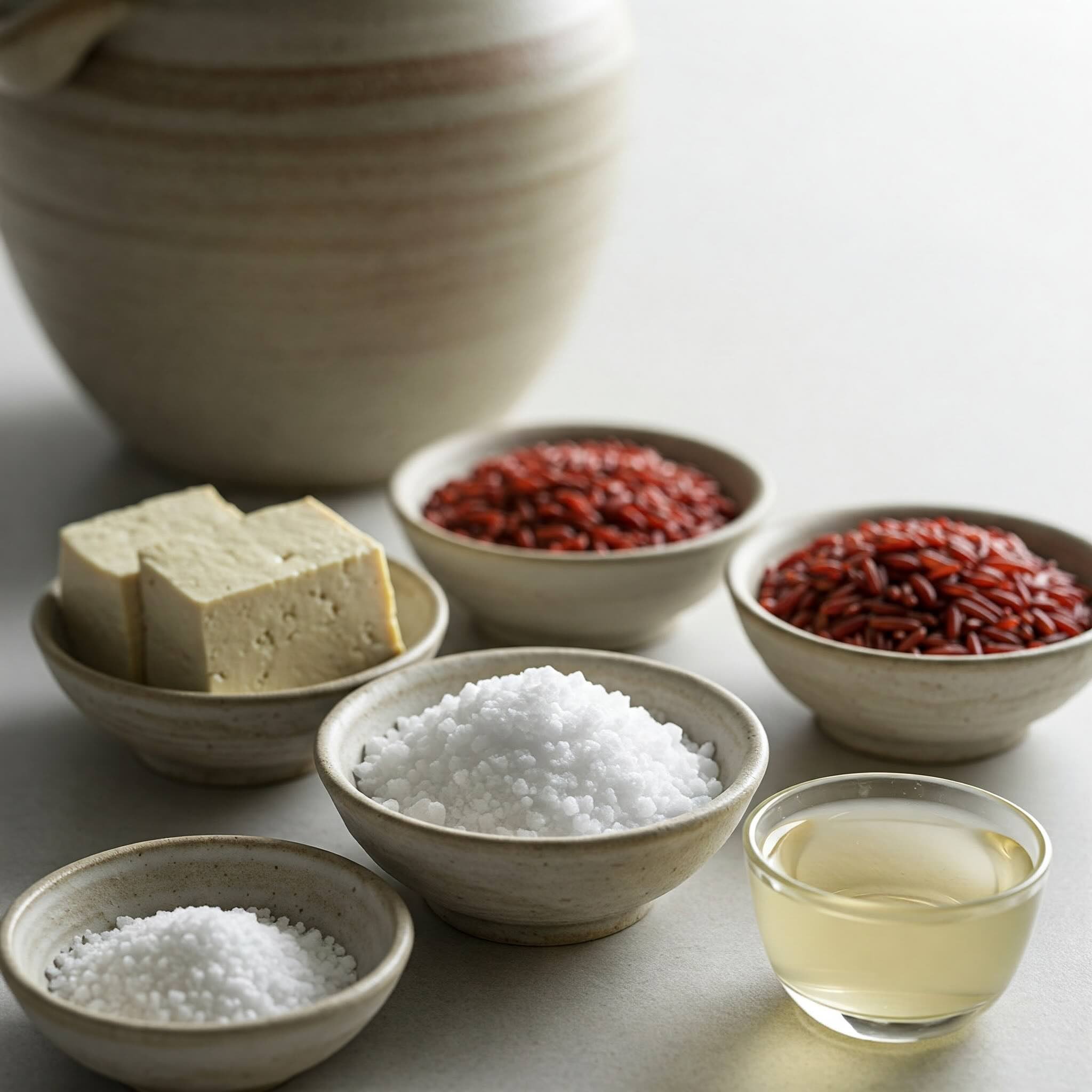The Science of Sufu – How Fermentation Creates Umami Gold
Behind every spoonful of sufu lies a microscopic world in motion—a fermentation process so precise, complex, and elegant, that it’s been quietly perfected for over a thousand years.
Sufu (fermented tofu) is not simply aged food. It’s a controlled transformation of soy proteins and fats into something almost unrecognisable—creamy, pungent, buttery, and bursting with umami. But what exactly is happening in that jar?
Let’s crack it open and explore the living science behind the funk.
🧬 Phase 1: The Art of the Cube – Prepping for Fermentation
Before fermentation can begin, tofu is cut into cubes and air-dried, either naturally or in climate-controlled environments. This reduces moisture, firms the texture, and prepares a porous surface where microbes can thrive.
In some traditional methods, the tofu is first inoculated with moulds from the Rhizopus, Actinomucor, or Mucor families—the same families used in tempeh and other East Asian ferments. These moulds begin forming a fuzzy white coating on the tofu. To the untrained eye, it looks suspicious. But in reality? It’s the beginning of the transformation.
This stage is often called "ripening," and it sets the stage for the flavour journey ahead.
🌊 Phase 2: Brining and Microbial Symphony
Once the mould culture has been established, the tofu cubes are placed into jars of brine. These brines vary across regions, but often include:
Salt – to inhibit bad bacteria and regulate fermentation speed.
Alcohol (usually rice wine) – to deepen the flavour and suppress pathogens.
Aromatics – like chilli, sesame oil, red yeast rice, or rose wine.
This is where the real fermentation magic unfolds.
✔ Enzymes from the moulds begin breaking down proteins into amino acids, particularly glutamate—the compound responsible for umami.
✔ Lipids (fats) are converted into free fatty acids and aromatic esters, contributing to the creamy, cheesy mouthfeel.
✔ Complex carbohydrates are reduced into simple sugars, giving sufu subtle sweetness or tang, depending on the strain.
In essence: proteins are softened, fats are aromatised, and flavours become more layered.
This is why sufu isn’t just “salty tofu.” It’s enzymatically enhanced—a product of microbial refinement.
🔬 Not Just Flavour – Nutrition Gets a Boost
Fermentation doesn’t just improve taste—it enhances nutritional value.
The microbial action increases the bioavailability of amino acids and nutrients.
Tofu becomes easier to digest, as proteins are partially pre-digested by mould enzymes.
Some sufu strains contain naturally occurring probiotics that support gut health.
Fermentation also reduces anti-nutrients like phytic acid found in soy, which can inhibit the absorption of minerals like calcium and iron. In other words: your body gets more from less.
🧠 Why Sufu Feels Like Cheese (But Isn’t)
Texturally and chemically, sufu shares fascinating similarities with aged dairy cheeses:
Proteolysis (protein breakdown) in both cases leads to savoury depth and softness.
Fatty acid conversion in sufu mirrors the lipid oxidation in aged cheeses.
Aromatic compounds like aldehydes, esters, and ketones build flavour complexity in both.
This is why sufu is sometimes called “Chinese cheese.” But here’s the key difference: sufu evolved independently, rooted in Asian microbiology and flavour theory, not in dairy mimicry. It’s not an imitation. It’s a parallel masterpiece of fermented transformation.
⏳ Time: The Final Ingredient
Depending on the method, sufu may ferment for anywhere from 3 weeks to 6 months or more. During this time, the balance between salt, temperature, and microbial activity is carefully watched.
In traditional clay jars, this balance is maintained by hand—turning cubes, skimming surfaces, and adjusting brine strength—guided by smell, sight, and taste. No thermometer. No pH meter. Just deep ancestral knowledge.
Even modern producers must walk a tightrope: too short, and it’s bland and gritty. Too long, and the bitterness or ammonic notes overpower the dish.
The goal? A cube that is creamy, umami-rich, gently sharp, and ready to melt into congee, sauce, or spread.
🌟 Final Thought: A Living Legacy in Every Bite
Sufu isn’t magic—it’s biology in harmony with culture.
It’s a masterclass in fermentation science that predates refrigeration, synthetic enzymes, or lab-grown anything. It shows what happens when humans and microbes collaborate—not to preserve something from spoiling, but to let it become something better.
The next time you open a jar and smell that bold, savoury hit of fermented depth, remember: you’re tasting centuries of adaptation, chemistry, and culinary art.
And all it took was a humble block of tofu, a bit of mould, and time.
💬 Curious about trying sufu after learning the science? Or do you already ferment at home? Share your thoughts—we’d love to hear about your microbial adventures.

